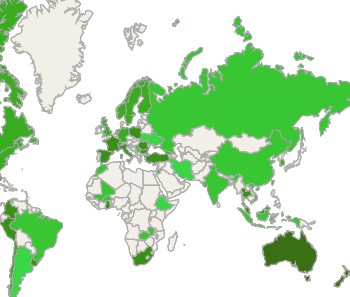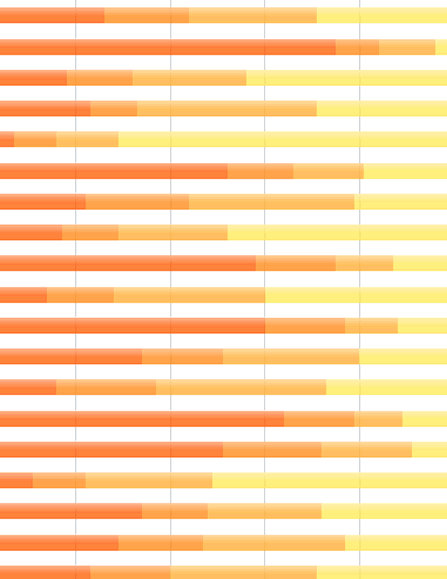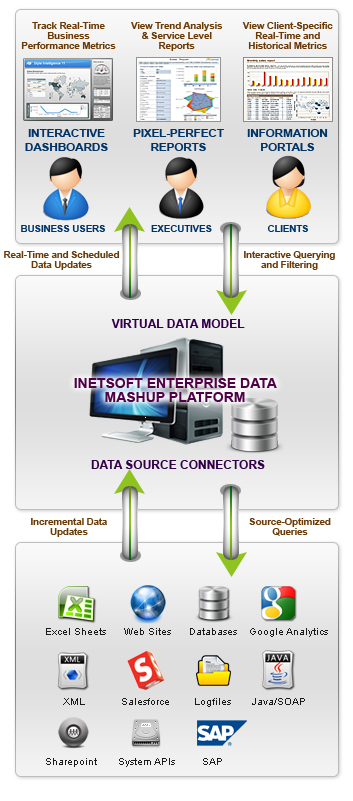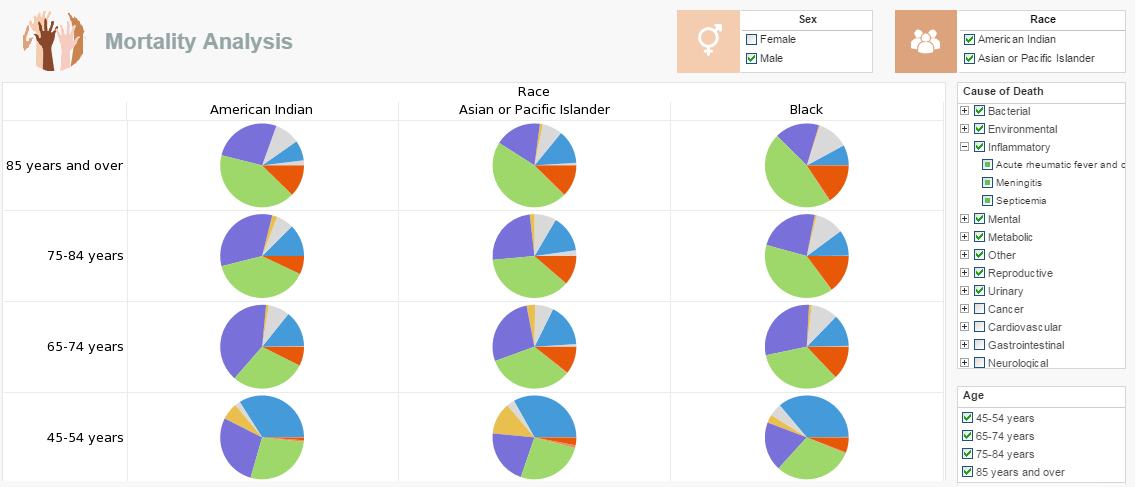Choosing InetSoft StyleBI Over Xcelcius
Although there many similarities amongst BI visualization tools in terms of the final output, the real differentiators lie in the development paradigm and workflow and data manipulation and massaging capabilities. In a nut shell, the ends do not justify the means; time to develop and ease of development and learning curves are important factors when choosing a BI tool.
Differentiating Features
SI - Intelligent Visualization Layer
- Ready made Cross Tab element for building flexible pivot and summary tables from detail data sets.
- Aggregation capabilities inherent in Charts, multi-dimensional visual binding color, shape, size and text. Automated one click drill down.
- Advanced Calculations on Chart and Cross Tab - Top/Bottom N views, running total, differential, change from previous, % of Group and Total etc.
- Dynamic date rollup in charts and pivot tables – Year, Quarter, Month, Week, Hour, Minute, Sec etc
- Chart Script API for customized charting.
- Automated linkage of elements Filters and Views for interactivity.
- Intelligent filtering, with automated interdependence amongst filters, with compatibility display. E.g. Selecting a State will cause the city filter to only show cities within that state.
- Business user driven chart and cross-tab customization.
- All development is done using zero client web based tools.
- No Cross Tab element, only simply table, any form of summarization must be performed on the spreadsheet.
- No aggregation capabilities in charts, they only display summarized rows data, no multi-dimensional bindings. Drilldown has to be manually set up.
- Any advanced calculation has to be performed on the spread sheet using formulas, which is complex and time consuming.
- Linkage of filters and views is not automated and has to be manually mapped to the spread sheet in a 3 step approach per filter. Label, Source, Destination. Adding multiple filters is even more complex.
- No interdependence amongst filters.
- No business user driven customization.
- Development only via desktop tool.
SI – Data Block Technology
- Business Data Model: A simplified business mapping of you data base schema hiding all the complexity from the developer / power user; facilitating adhoc query building.
- Data Work Sheet: A dedicated tool for data manipulations, complex querying via a drag and drop building block like interface. Facilitating complex data manipulations like aggregations, joins, set operations, pivoting, un-pivoting, java script expressions etc.
- Data Grid Cache: A high performance caching mechanism facilitates aggregation of large volumes of data supporting large user concurrency.
- No Business Data Model for adhoc querying.
- While data manipulation can be performed in excel, it can get very cumbersome especially when dealing with multiple blocks of data. Tasks which are performed with a point and click operation will require formulas and macros to be develop, this requires expertise in excel and is also laborious. E.g. Joining 2 datasets with an outer join, top 10 views, date rollups etc.
- No caching mechanism for scalability in terms of data size and user access.
 |
Read why choosing InetSoft's cloud-flexible BI provides advantages over other BI options. |
Consider a simple visualization containing a chart, a gauge, and a filter.
Filter – Select a list of Employees
Chart – Monthly Sales for the Employee Selected
Gauge – Total Sales for the Employee Selected
Base data is a simple un-aggregated excel work sheet.
Order Id, Employee, Product, Date, Amount
- Import excel file into data work sheet
- Create new View Sheet
- Add Selection List
- Drag and Drop Employee Field In
- Add Chart
- Add Date Field with Month Rollup Options on X Axis and Amount on Y Axis
- Add Gauge
- Drag and Drop Amount field into the gauge
- Open excel file and create a formula to roll up the date to the month.
- Create a pivot table.
- Create a new XLF file
- Import the excel spread sheet
- Add a selection box and open the property pane
- Specify Label range
- Create Data Insertion Series
- Specify Insertion Type
- Specify Source Data
- Specify Destination Data
- Add Chart
- Specify Data Series values matching selection filter destination.
- Specify Category Labels
- Specify Drill Down Insertion Type
- Specify Drill Down Destination.
- Add formula for summary in spreadsheet
- Add Gauge
- Specify Data

Observations
Ease of Use -- In SI,the entire module was build with drag and drop operations, without the need to get into any context menu. An operation like a filter set-up takes 1 step in StyleBI and 4 in Xcelcius.
- In SI, Chart drill downs and date roll-up are automated, while they had to be manually set up in Xcelcius.
- In SI, Because of the intelligence on the visual layer, there was no manipulation required in the data layer, while in Xcelcius required a lot of manipulation on the spreadsheet.
- The SI, module can easily be changed without any modification on the data layer, e.g Date Roll Up changed to Year, or adding an additional filter, or another chart, while in Xcelcius this would require modifications to the spread sheet and the visual design.
Additional Features
Scheduling and Alerting – InetSoft features a state-of-the-art scheduling and alerting framework that goes beyond traditional business intelligence in order to provide common scheduled actions and light-out alerting to end users via dashboards, SMS, e-mail or any other alerting mechanism when configured thresholds are breached. Xcelcius has no in-built scheduling or alerting features.
User Based Data Access – InetSoft supports transparent data level security, with configurable modules called Virtual Private Models. Xcelcius has no such functionality
Database Writeback – InetSoft supports data input and database write-back capabilities - also known as full-lifecycle BI – enabling end-users to interact with dashboards/reports - by entering quotes, approving requests, adjusting forecasts, adding comments, uploading photos, scanning products, and more. Xceccius has no data input and database write-back capabilities.
Full Spectrum Analytics & Reporting – Like Tableau, InetSoft features visualization technologies as the foundation for interactive exploration and discovery. But unlike Xcelcius, InetSoft doesn’t stop at interactive visualization but includes very sophisticated reporting capabilities. Information publishing and dissemination often require reports with codified, sophisticated business logic and/or pixel perfect formatting. Advanced features include scheduling, archiving, versioning and auditing. InetSoft integrates visualization into all modes of information delivery which unifies analysis, reporting and dashboards into one seamless environment

 |
Read why choosing InetSoft's cloud-flexible BI provides advantages over other BI options. |
About InetSoft
Since 1996 InetSoft has been delivering easy, agile, and robust business intelligence software that makes it possible for organizations and solution providers of all sizes to deploy or embed full-featured business intelligence solutions. InetSoft solutions have been deployed at over 5,000 organizations worldwide, including 25% of Fortune 500 companies, spanning all types of industries. InetSoft was ranked among the top 5 BI vendors in Gleanster's customer survey report.




